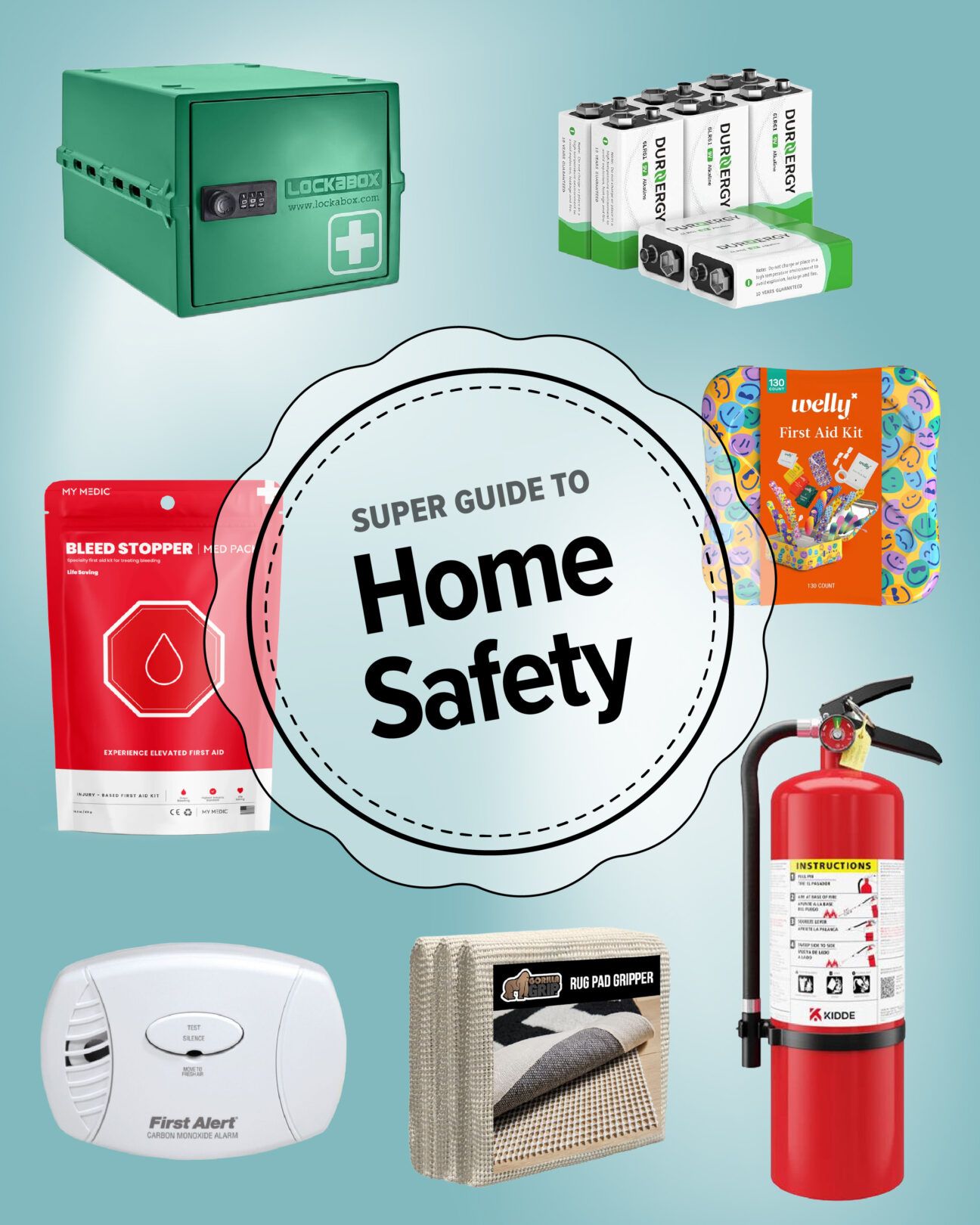No matter your age, homes can be accident and hazard zones if we don’t take certain precautions. Here’s our home safety checklist.
| Test smoke detectors | Test once per month using the test button on your detector. Your pets will hate you for the noise, so shield them outside while you do it, if possible. |
| Replace smoke detector batteries | If your smoke detector is hardwired, replace the batteries annually. Don’t rely on just the hardwire. The battery is the backup if electricity fails, so you want to ensure it’s ready for action, not old and expired. |
| Don’t underestimate air filters | Replace these every 2 months — closer to 1 month if you have pets or allergies or live with a smoker. Opt for MERV 13 filters to help keep your breathing air as clean as possible. |
| Install carbon monoxide detectors | Step one: Install them near bedrooms, the kitchen, and in your basement if you have one. Step two: Replace them roughly every 5 years or when they start to chirp at you. Test them monthly when you test smoke detectors. |
| Consider door chimes | These are super helpful for the bedroom doors of younger kids or anyone you care for. They alert you if they wake up in the middle of the night and leave the room, essentially working like internal doorbells. |
Shopping list
| Stock fire extinguishers | Not just in your kitchen. While that’s one important area, consider keeping one near or on the path toward each common exit in your home as well. Review the instructions every now and again with your family; it’s best not to learn how to use one in a heated moment. And remember, they have a shelf life of about 10 years but this can vary by type and manufacturer. |
| Buy fire blankets | These are special blankets that suffocate fire. They are reusable, but aren’t messy like fire extinguishers, and they are a little easier to store. They are also more straightforward to use, so there’s less risk of user error in a moment of need. |
| Lock the under-sink cabinet | Wherever you store cleaning chemicals and other hazardous items that pets and kids should avoid, lock them up or install magnetic cabinet locks. |
| Clean hood vent filters | Too much buildup on the metal filters above your stove, usually under a hood vent or the underside of your microwave, can increase the risk of grease fires. When they get clogged, it’s also not great for air quality. |
Shopping list
| Lock up medications and store them high up | Store over-the-counter and prescription medications in locked containers where kids and teens cannot access them. |
| Stock first aid kits | Keep 1 to 2 of these around the house for accidents. Consider other medpacks for more serious injuries or if you live in rural areas, far from medical attention. My Medic is one brand that has kits for various types of adventures and accidents. |
| No slip grips for showers | Falls can happen at any age. Showers are a common culprit, so use grippy, nonslip shower mats. |
Shopping list
| Swap outlet covers for ones with lights | Instead of plug-in night lights, buy outlet covers that feature ambient lighting and automatically sense the dark. This can ease concerns about not being able to see properly in the dark. |
| Employ rug grippers | Rugs cover up slippery floors to prevent falls, but they can also be a hazard if not secured properly. Make sure you lay a nonskid pad underneath. |
| Secure large furniture to walls | These are not just for those who live in areas prone to earthquakes; they’re essential for households with kids to prevent furniture from tipping on little ones who dare to climb. |
Shopping list
Accidents happen, but many are also preventable. Add these items to your monthly and yearly checklists of what to do around the house. After all, home safety checkups are hip (or so we’re declaring).





